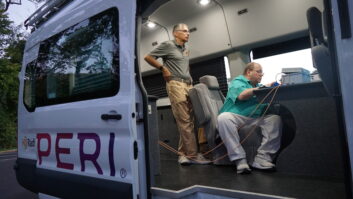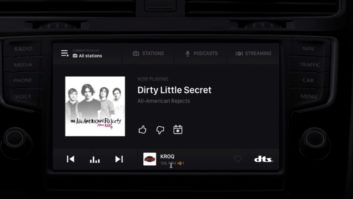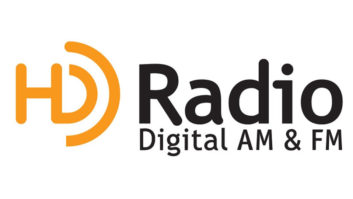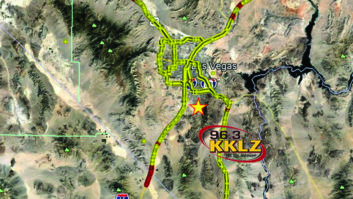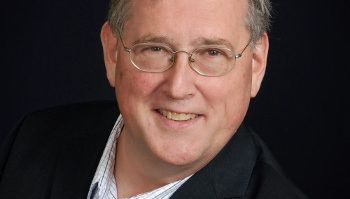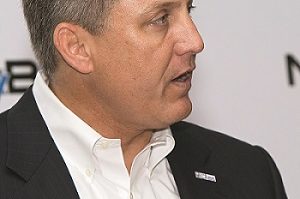Things you can do with HD Radio beyond the main signal will be a topic of discussion in Sunday engineering sessions at NAB.
• Sunday morning April 15:
“Multicasting for Radio”• Sunday afternoon April 15:
“RF Implementation for HD Radio”by Mario Hieb
One in a series of day-by-day descriptions of events at the upcoming Broadcast Engineering Conference of NAB2007.
In early days of the digital radio debate, proponents asked each other what the “killer app” might be that would put HD Radio into the “must-have” category. Multicasting was one candidate.
That app is here. A series of papers on Sunday at NAB2007 explores what could, in fact, be numerous killer applications spawned by the technology.
MULTICASTING FOR RADIO
“Multicasting for Radio,” chaired by Jeffrey Smith, president of JRS Broadcast Engineering, begins at 9:30 a.m. on Sunday, April 15.
The session begins with “HD Radio Advanced Services — A Market Reality,” by Joseph D’Angelo, vice president of advanced services for Ibiquity Digital. He will talk about developments in multicasting and comment on product evolution and the results of recent field trials.
New services to be described include time-shifting, electronic program guides, conditional access, real-time traffic and other multi-media services.
Raymond Miklius, vice president of Broadcast Electronics, will speak on “Implications of Advanced HD Radio Services on Station Workflow.”
All too often, emphasis is placed on new equipment or software installation, while not enough thought goes into the resources necessary at the station to support these services on an ongoing basis. Within the next year, several services will be enabled for HD Radio stations, including conditional access, electronic program guides and data file transfers over the data bandwidth enabled within an HD Radio signal. Miklius said he will describe the additional infrastructure required for these services and will evaluate the station workflow implications for each of these new services.
“Automation and Playout in Multi-Stream Environments” by Eugene Novacek, chief executive officer of ENCO Systems, is a look at the “nuts and bolts” behind automation in multi-streaming situations. He takes a look at what is involved in delivering audio, associated metadata and control in several such environments and discusses the aspects that need to be addressed in each case.
Novacek said he’ll also outline the history of standards for streamed metadata, how system flexibility is critical in addressing rapidly changing requirements and what might come next.
Thomas Rucktenwald, director of data applications delivery for NDS, will speak on “HD Radio Conditional Access: What It Is; How It Fits In the Broadcast Station; and Why It Can Provide Outstanding Return on Investment.”
Rucktenwald said he’ll examine the possible implementations of conditional access within digital radio. This model, he said, works well for subscription pay TV. Conditional access equipment fits into the station, mates to other equipment that may be within the station, operates within the station’s workflow and creates new operations that the station must perform.
How can conditional access work for terrestrial HD Radio? What programming works with conditional access? Does terrestrial HD Radio have advantages over other transmission media? Can subscription models work with the HD Radio multicast?
The final presentation is “Radio Engineering — Managing Multiple Formats Made Easy.” Richard Darr, vice president of sales and marketing for RCS, will tell how the company has developed solutions to manage multiple formats, streaming, seamless in-stream commercial replacements, multi-station content and single database control.
RF IMPLEMENTATION FOR HD RADIO
Steve Fluker, director of engineering at Cox Radio in Orlando, Fla., will moderate this group of presentations, which begin at 1 p.m. on Sunday.
The first session of the afternoon will be “HD Radio Implementation Case Studies: Dual-Polarized Master Antenna,” by Myron Fanton, chief engineer of RF technology for Electronics Research Inc.
IBOC high-level combining via orthogonal-polarized antenna elements is an established technique for simultaneous analog and HD Radio transmission. Fanton will address the performance and project parameters in a full-power, multi-channel HD Radio system. He’ll talk about the master FM antenna and combiner system installed for Senior Road Tower Group in Missouri City, Texas, as an example of the implementation issues involved in dual-polarized IBOC combining.
Details of the system design are discussed, considering the key specification of radiation pattern symmetry, antenna impedance and isolation, and combining system isolation.
Spectral re-growth, inter-modulation products, transmission issues, power capacity and system measurements provide insight for the implementation of a successful HD Radio system, he said. The discussion will include the engineering design of antenna and transmission system components to achieve the level of performance needed for master antenna use; he’ll also talk about lessons for single-station transmission systems.
Henry Downs, associate principal electrical engineer for Dielectric Communications, will deliver his presentation, “Isolation in IBOC Multi-Channel Systems-St. Louis, Real-World Data.”
Downs said he will stress two main concepts. The first is that IBOC system isolation is critical. Any IBOC system has to be optimized as a system for isolation between the analog and digital transmitters, he said. His second issue is with respect to system monitoring. It’s critical to know how system changes due to icing, for example, affect the way reflected power is distributed within the system. He will present data to highlight these topics.
“Pre-correction Techniques for Radio Broadcast Transmitters” is to be given by Richard Hinkle, vice president of engineering and technical services for Broadcast Electronics.
He will focus on a systems approach to the pre-correction of radio broadcast transmitters. There are many types of correction schemes that have been implemented, each with its own advantages and disadvantages, he said. However, Hinkle argues, there are no “free lunches” when designing a linear transmission system. He will talk about how a manufacturer must take a system-level approach that includes all major components when pre-correcting a transmitter for spectral performance and efficiency. This will include the role that the power source, power amplifier and pre-correction type play in the overall performance of the system.
“Low-Loss FM Filters Employ Evanescent Modes” is by Derek Small, director of filter products for Myat Inc., and will appeal to cavity filter fans.
High-performance band-pass filter design for terrestrial TV applications use evanescent modes to decrease insertion loss, increasing power-handling capability, Small says. He’ll talk about evanescent mode filter design for FM, and applications for IBOC mask filters and channel combining requirements. He’ll also tabulate an outline of different cavity geometries, the associated unloaded Q and insertion loss.
Small said he will show how to take advantage of evanescent mode filter design techniques to produce lower-loss IBOC/FM filters. He will talk about applying these techniques to LPFM and larger high-power filters used in multi-channel combiners.
Kerry Cozad, vice president of engineering for Dielectric Communications, will deliver an “FM Digital Radio Implementation Update.”
Cozad said he will present examples of installed systems and provide measured data on these configurations. An area of discussion will be the use of circulators for both low- and high-power systems to improve isolation between the analog and digital signals as well as extending the usable bandwidth of existing antenna systems.
What’s new in AM HD Radio land? Charles Cooper, partner at du Treil, Lundin & Rackley Inc., will tell us in “Location Availability Coverage Analysis of AM HD Radio.”
The location availability of a subject HD Radio AM radio station is analyzed by employing a simple HD Radio car receiver, modified to sample when a digital signal is present, correlated with a GPS-derived location. This availability also analyzes the changes in location availability when the AM HD Radio transmission operates in non-optimal configurations including asymmetrical sidebands and mismatched load impedances.
“FM HD Radio Field Trial Results Under European Frequency Planning Conditions” will be discussed by Markus Ruoss of Ruoss AG, Rotkreuz, Switzerland.
Ruoss will explain how FM HD Radio in Europe can be used as well as in North America. Several countries have started investigating FM HD Radio. He’ll discuss major differences and constraints for FM HD Radio Implementation under European frequency planning standards.
From the folks who brought you the atom bomb: “A Precision, Low-Cost GPS-Based Synchronization Scheme for Improved AM Reception” is the latest development of Oak Ridge National Laboratory, Oak Ridge, Tenn.
This presentation promises a highly accurate carrier-frequency synchronization scheme for locking multiple, remotely located AM broadcast transmitters to a common frequency/timing reference source such as GPS. A tight frequency lock permits the effective elimination of audible and even sub-audible beats between the desired station’s carrier signal and distant stations’ carriers, usually received via skywave propagation during evening and nighttime hours.
Significant reduction or elimination of the beats and related effects can significantly enlarge the effective listening area of the desired station and simultaneously reduce the corresponding interference of the local transmitter to the distant stations. In addition, HD reception will clearly benefit via the reduction in beats from analog AM signals.
And from the Southern Hemisphere, the final presentation of the day is about “HD Radio Technology Implementation in Brazil.”
In some Latin American countries the radio digital format debate is heating up. “In Brazil it would seem the decision is now almost a forgone conclusion, with 25+ stations on the air and hundreds in the process of planning,” according to NAB’s summary.
This presentation will include a discussion on why that populous nation is close to adopting HD Radio technology, how HD Radio is being marketed there, the status of HD Radio implementation and some of the technical and political obstacles Brazilian broadcasters have faced. Presenters are from Ibiquity Digital, Radio Globo Brazil and Harris Broadcast.





